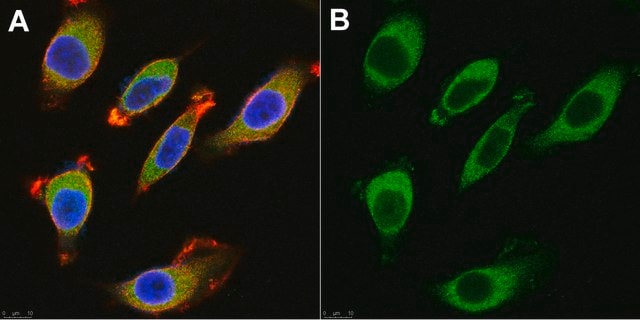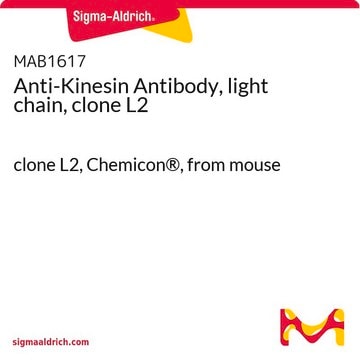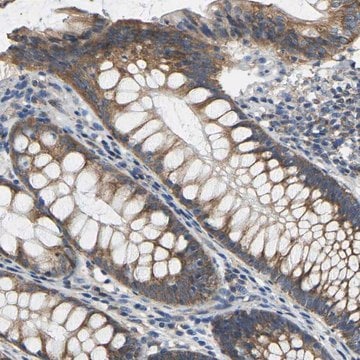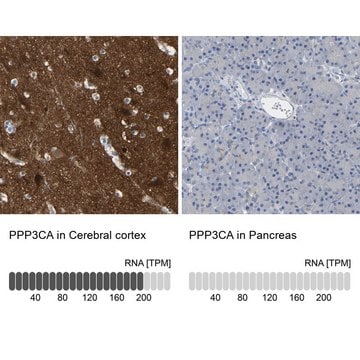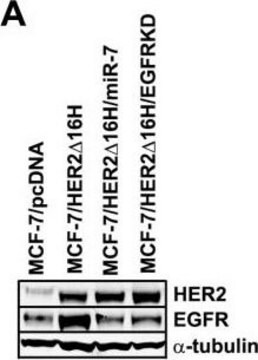MAB1613
Anti-Kinesin Antibody, heavy chain, non-neuronal KHC, clone H1
clone H1, Chemicon®, from mouse
About This Item
Polecane produkty
pochodzenie biologiczne
mouse
Poziom jakości
forma przeciwciała
purified immunoglobulin
rodzaj przeciwciała
primary antibodies
klon
H1, monoclonal
reaktywność gatunkowa
rat, human, bovine
producent / nazwa handlowa
Chemicon®
metody
ELISA: suitable
immunocytochemistry: suitable
immunohistochemistry: suitable
immunoprecipitation (IP): suitable
radioimmunoassay: suitable
western blot: suitable
izotyp
IgG1
numer dostępu NCBI
numer dostępu UniProt
Warunki transportu
wet ice
docelowa modyfikacja potranslacyjna
unmodified
informacje o genach
human ... KIF5B(3799)
Specyficzność
Immunogen
Zastosowanie
Immunocytochemistry: paraformaldehyde fixed cells; 5-10′ RT, freshly made 4% PFA; permeabilize with 0.1-.2% triton X-100 in 3% normal serum blocking buffer
Immunoblotting: recognizes 124kDa KHC from non-neuronal samples.
Immunoprecipitation
Inhibition of kinesin mediated transport
EIA/RIA
Optimal working dilutions must be determined by the end user.
Postać fizyczna
Inne uwagi
Informacje prawne
Not finding the right product?
Try our Narzędzie selektora produktów.
Kod klasy składowania
10 - Combustible liquids
Klasa zagrożenia wodnego (WGK)
WGK 2
Temperatura zapłonu (°F)
Not applicable
Temperatura zapłonu (°C)
Not applicable
Certyfikaty analizy (CoA)
Poszukaj Certyfikaty analizy (CoA), wpisując numer partii/serii produktów. Numery serii i partii można znaleźć na etykiecie produktu po słowach „seria” lub „partia”.
Masz już ten produkt?
Dokumenty związane z niedawno zakupionymi produktami zostały zamieszczone w Bibliotece dokumentów.
Nasz zespół naukowców ma doświadczenie we wszystkich obszarach badań, w tym w naukach przyrodniczych, materiałoznawstwie, syntezie chemicznej, chromatografii, analityce i wielu innych dziedzinach.
Skontaktuj się z zespołem ds. pomocy technicznej
